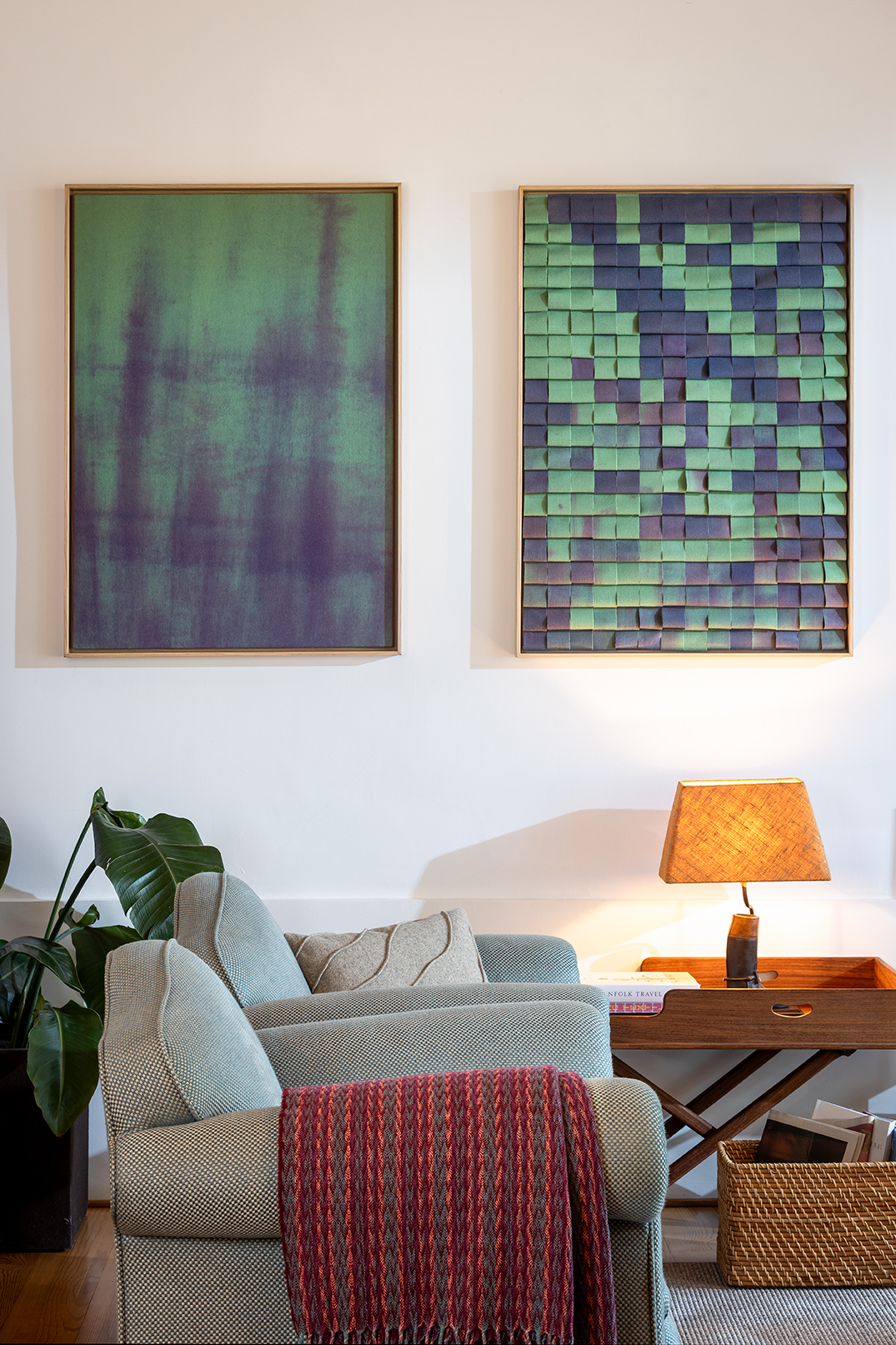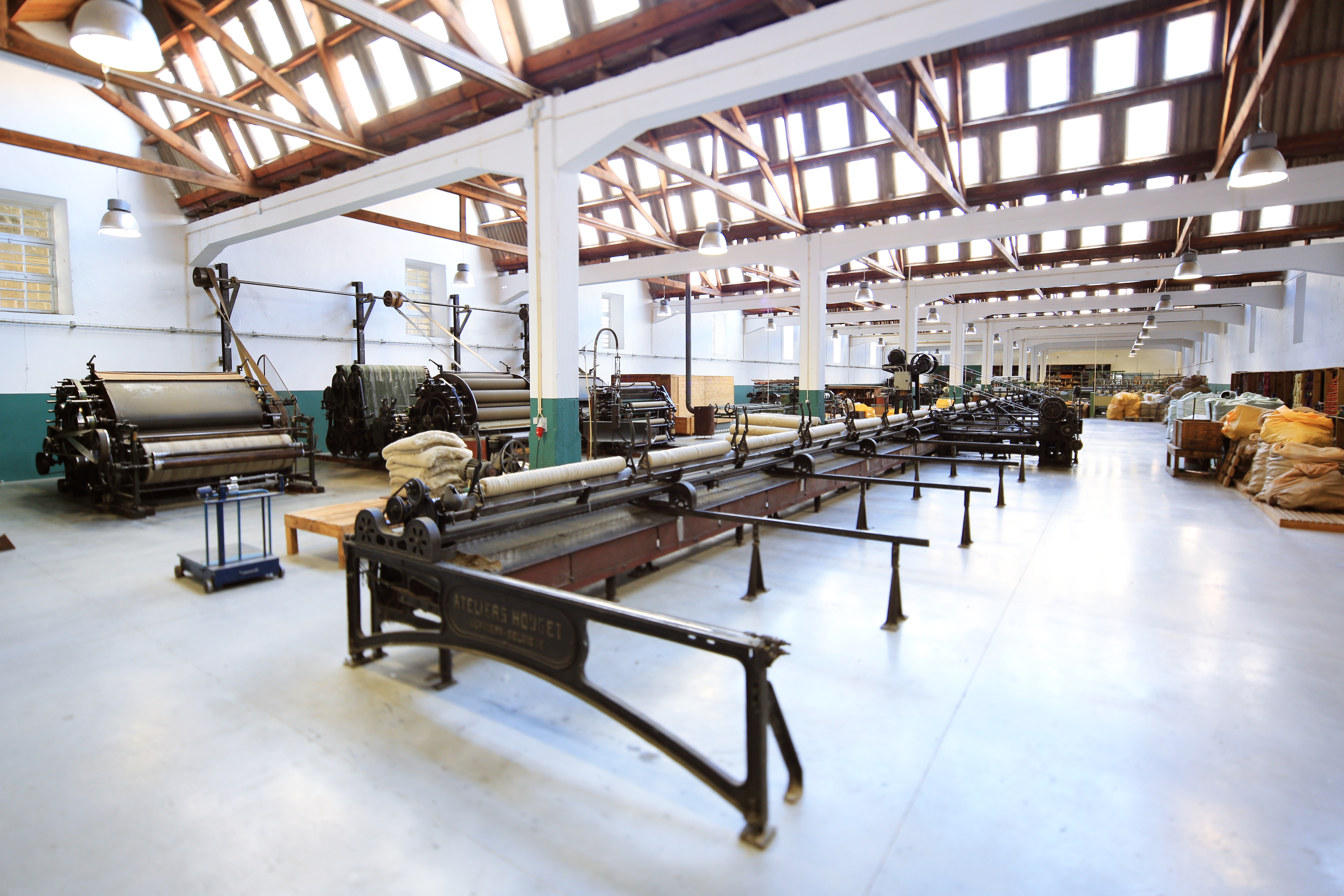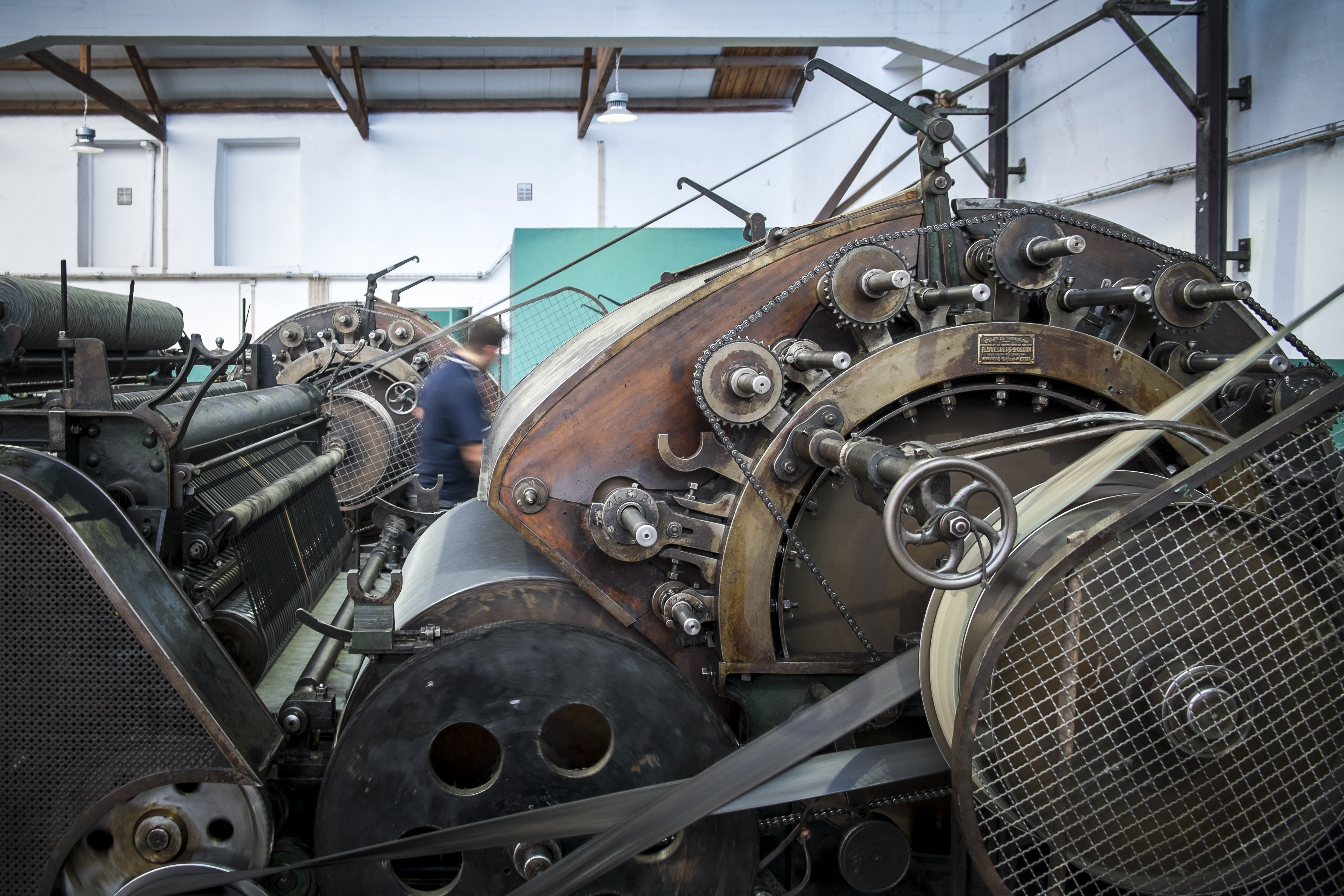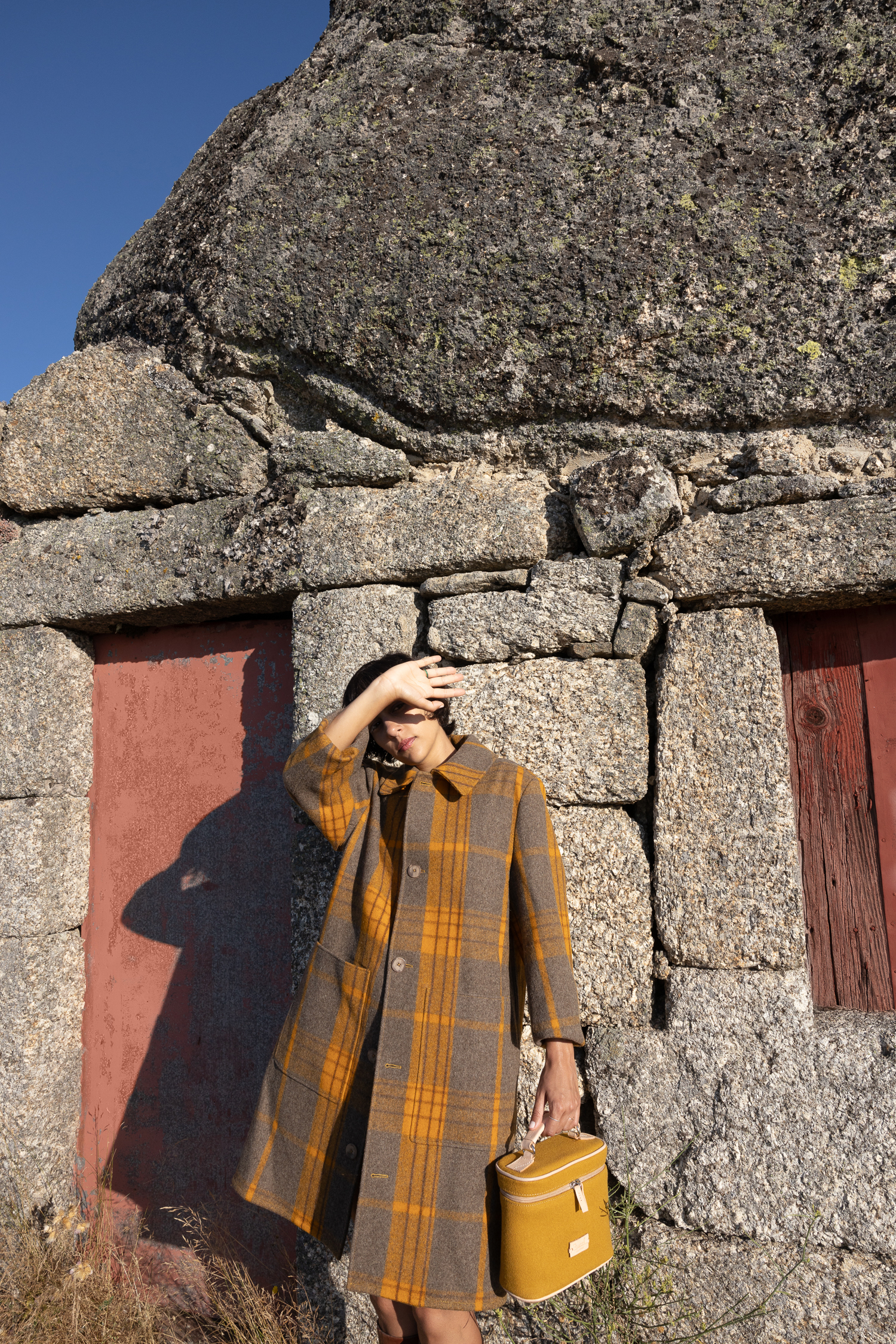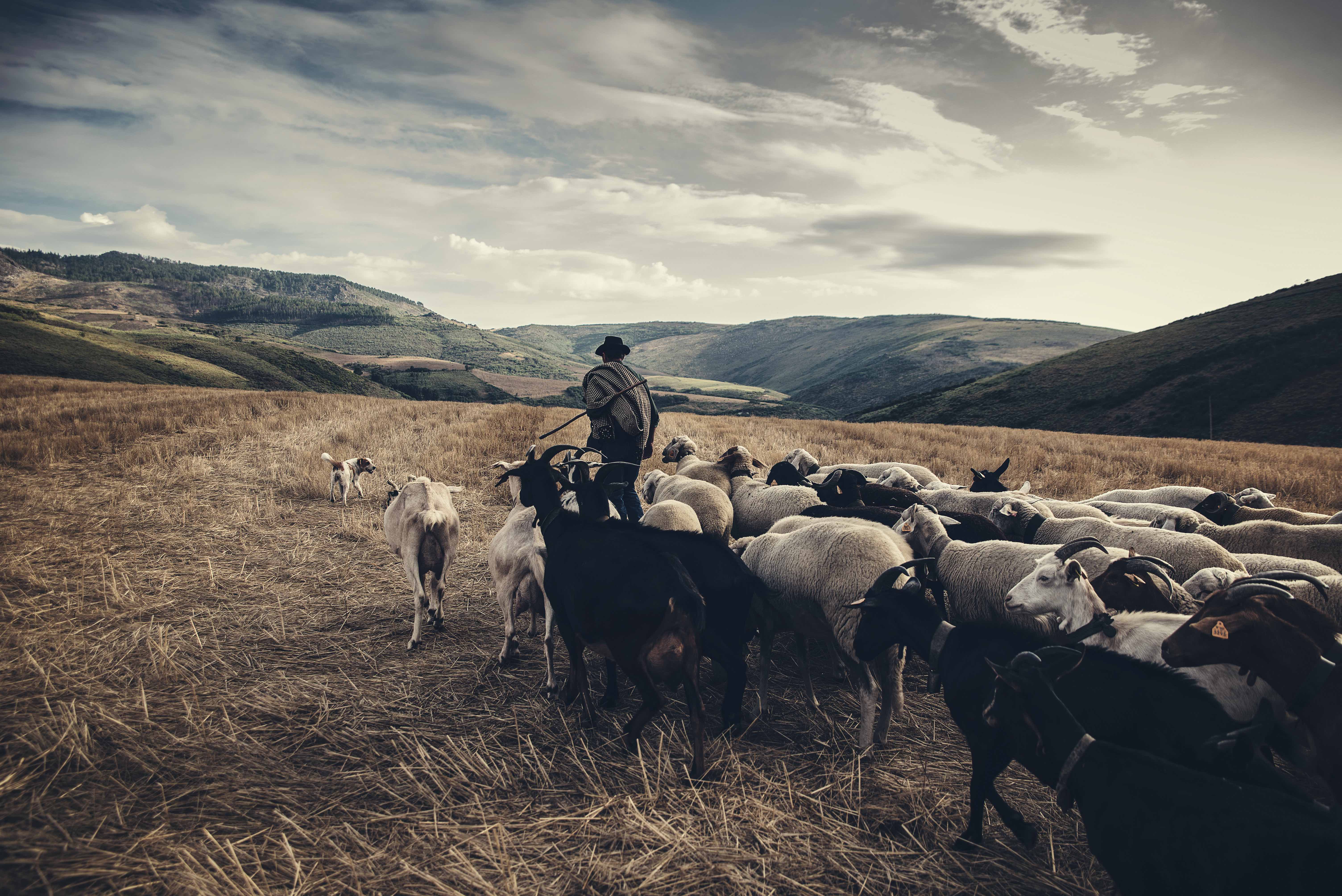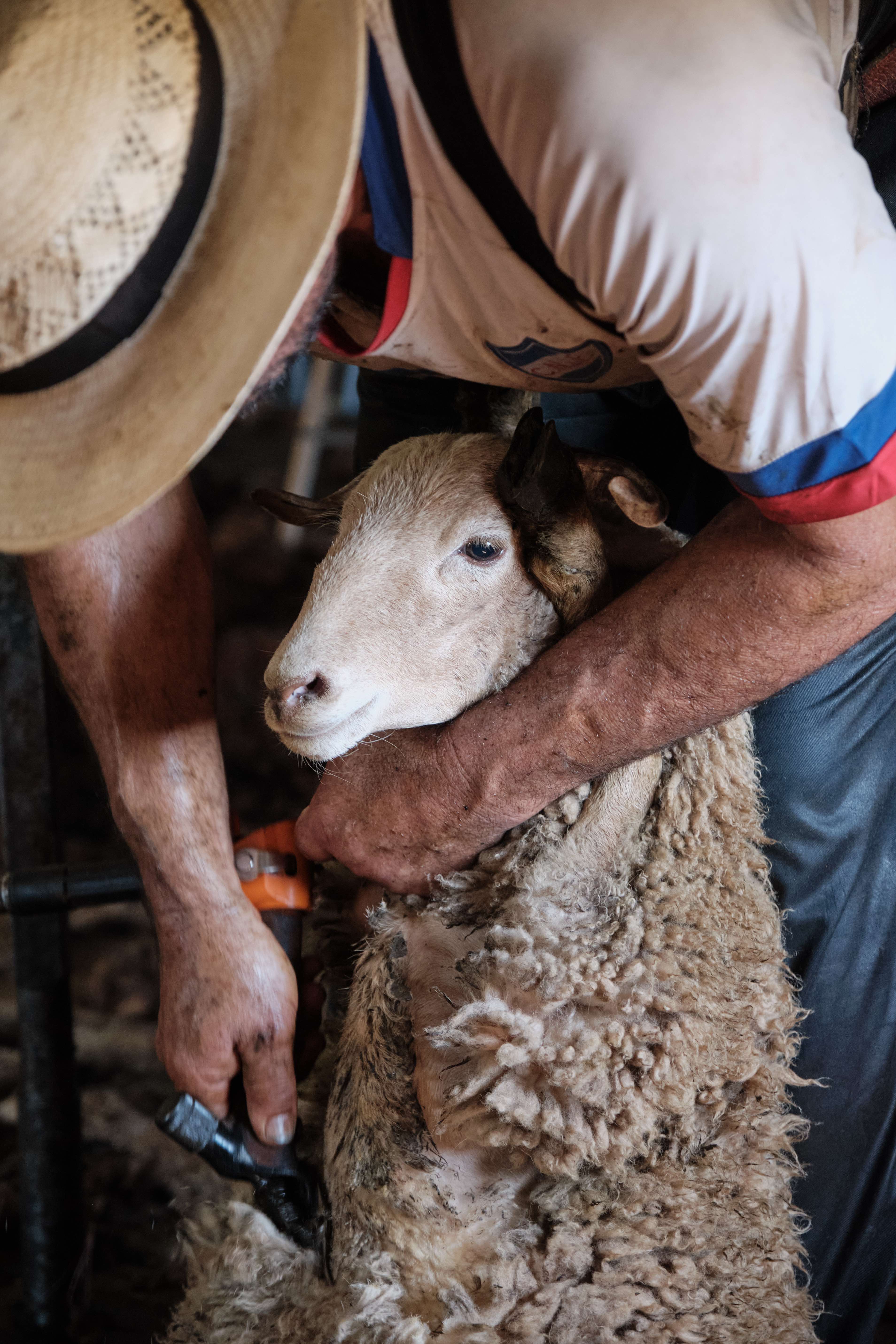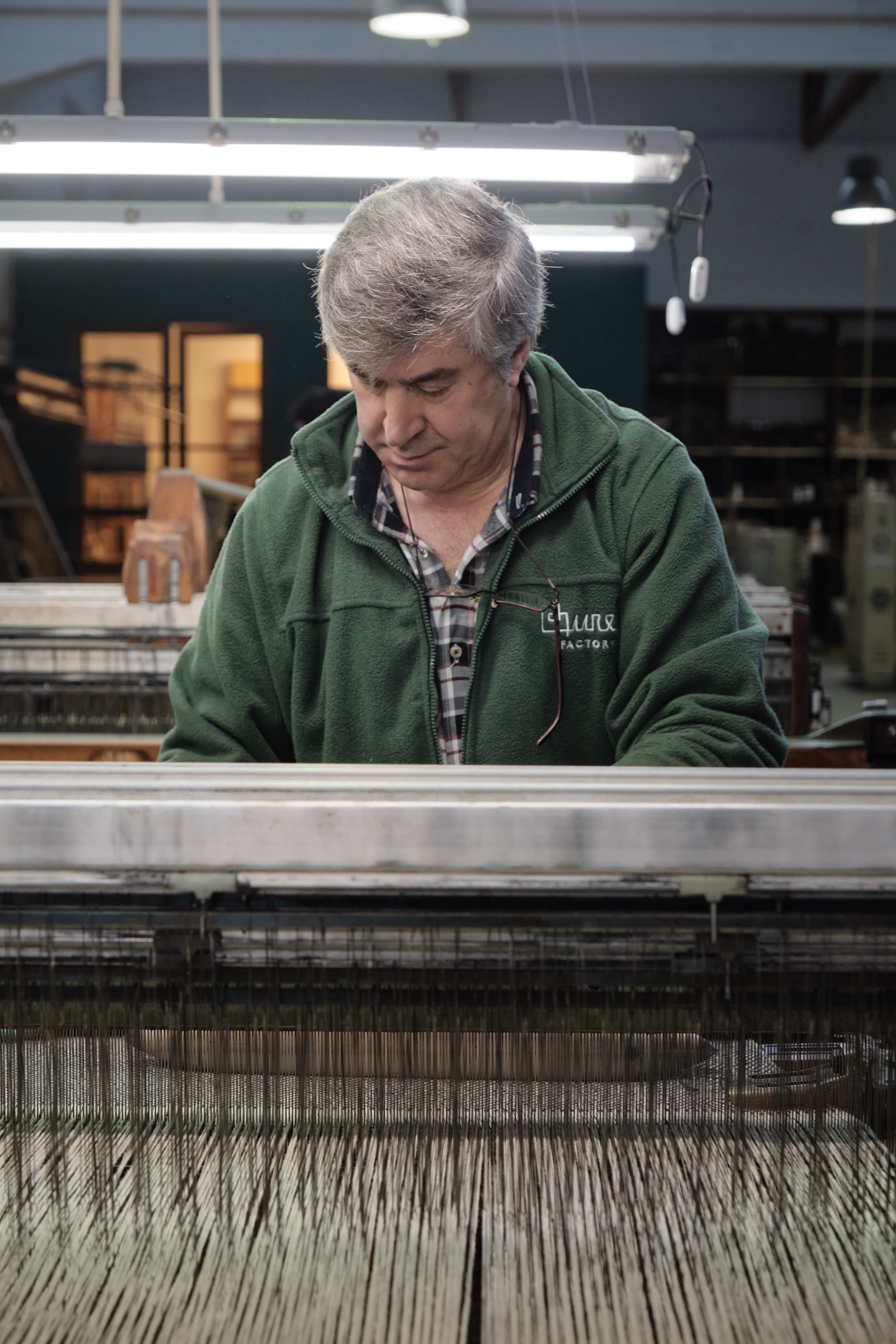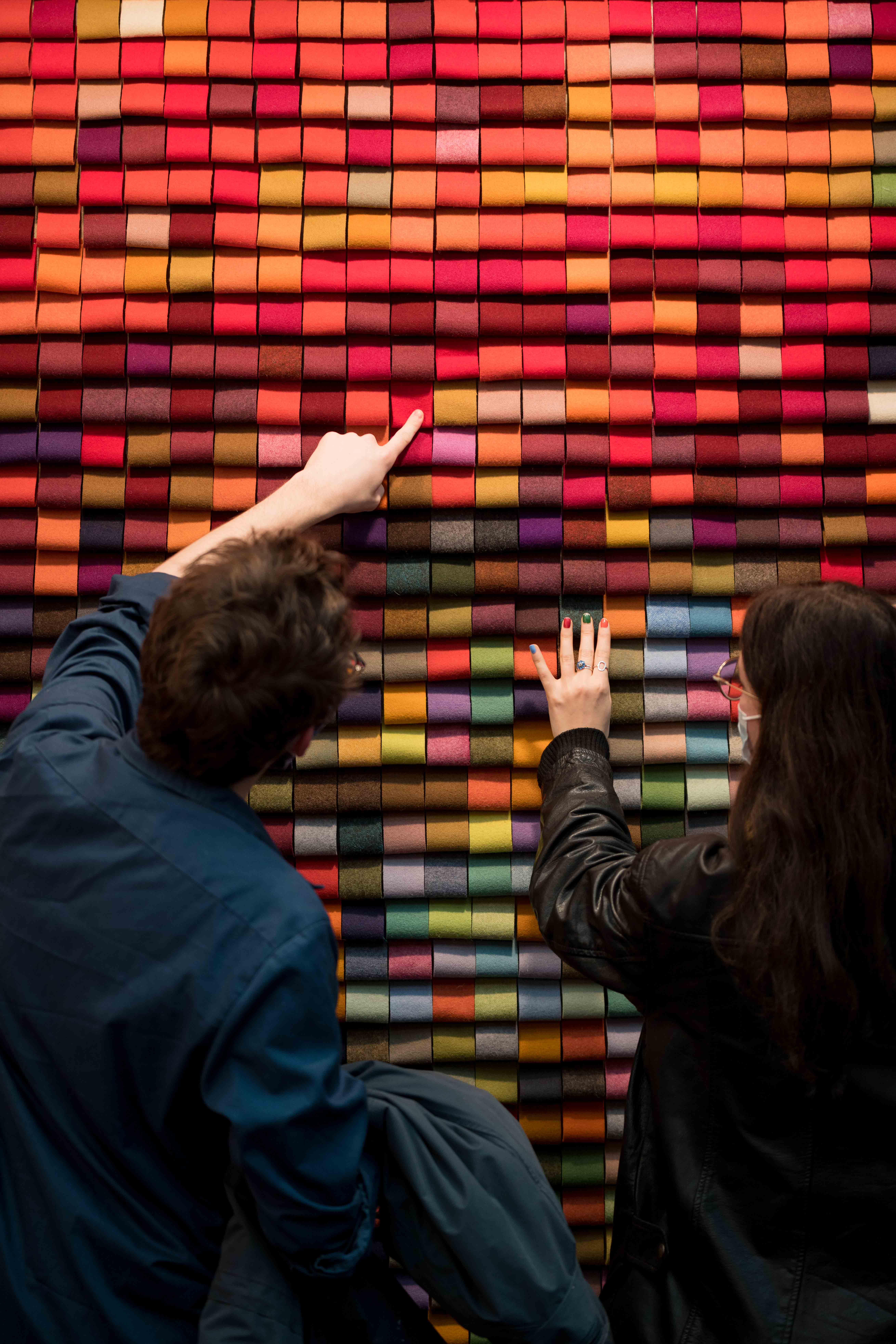Shaping a circular industrial ecosystem and supporting life-cycle thinking
Burel Mountain Originals
Burel Factory - A Brand woven into a greater Heritage
Burel Factory is a Portuguese brand, born in Serra da Estrela, dedicated to the preservation and regeneration of the wool industrial heritage, the unique culture and traditions, its people and its history. It ensures the legacy of wool and burel through design, art and textile and scientific innovation, weaving with the threads of the past a sustainable, circular and authentic vision of the future. And it does so out of a deep sense of commitment with the territory and the community.
Portugal
National
It addresses urban-rural linkages
It refers to a physical transformation of the built environment (hard investment)
Yes
2021-01-01
No
No
No
As a representative of an organisation
Burel Mountain Originals is a 100% Portuguese brand that was born with the aim of preserving a heritage and a historical framework in Portugal. A Serra da Estrela brand made from the region’s most typical fabric – Burel. Burel is a fabric made from 100% wool that, after being beaten and boiled, becomes denser and guarantees incredible versatility and durability, making it the perfect natural solution to be used in decoration, fashion, accessories, interior design, and architecture. Burel Mountain Originals is a brand that encompasses several projects whose mission is to promote the region and its products. It includes the Burel Factory brand, the active factory (a place of production) that is also a museum (a place for visitors); Mantecas, the wool blankets brand; Lanifícios Império, the fabric manufacturing brand; Burel Mountain Hotels, a hotel project composed of two hotels at the top of the mountain (Casa das Penhas Douradas – Burel Expedition Hotel and Casa de São Lourenço – Burel Panorama Hotel); and A Transformadora, a working factory that explores the relationship with art and research (science). Burel is a project that has evolved from being a simple fabric to becoming a brand that represents a lifestyle. Since its beginning, the project has grown from values that still serve as an example in its daily operations: we use a material that is native to the typical nature that produces it, and to its ancestral relationship with the way it has been used by society. It was design, with its ability to adapt to the vicissitudes of each era and its aesthetic as well as transformative nature, that saved the material which had previously been neglected by the industry. The knowledge of local agents and their connection with history is included in the project’s production chain, whether through creating local employment by supporting experienced structures that need investment, or through involving the community in building social alternatives for a sustainable society.
Industrial Heritage
Local Produtcs (Local Wool)
Circular Economy
Eco-responsibility
Social commitment
From the pastoralism of the Serra da Estrela, its flocks and the local vegetation of the high plateau, we obtain the best soft wool, a renewable, recyclable, biodegradable, thermal and breathable raw material, which we easily dye in an ecological way, for the production of our products. We use wool from the Bordaleira and Churra breeds, two native breeds of the region, which are part of flocks of shepherds who are now our associates. We ensure that the animals are well-treated, live happily, and that the shearing is done manually without causing any kind of suffering. All processes follow the organic rhythm of the mountain and the agricultural calendar, applying a zero-waste policy. We use all manufacturing resources consciously and establish local partnerships to enhance innovation and wool valorization, from designers to merchants, from researchers to farmers. We develop part of our products from leftover raw materials, collecting and reintroducing them into the transformation process. We create unique and mindful pieces that contribute to minimizing the ecological impact and that respect the fragility of nature. We hold the RCS (Recycled Claim Standard) certification, granted by Citeve, highlighting our commitment to sustainability, recycling and the circular economy. Our economic activity raised awareness in the region about the importance of wool, preventing its waste (and the consequent illegal disposal in the environment) and promoting its use as a raw material. Many associations that protect the region's native breeds are now our partners, spreading the word to sheep farmers about our interest in using the wool from their flocks, which they thus protect and maintain as an investment. The native breeds are protected and used as a tool for a circular business model (shepherd - sheep - wool - sale - purchase - manufacturing - sale - purchase - shepherd), but also as a key element in the functioning of an ecosystem.
Our collection is unisex, designed by our designers with the goal of not conforming to social constructs of gender identity and clothing intended for a specific body type. Fabric has no gender, just as the garments created from it. This way, we also reduce costs on samples, prototypes, production times, and energy in the manufacturing chain of a garment, while also decreasing the waste footprint that this ever-growing industry, fueled by the unconscious consumption of fast fashion, has been creating. We lessen the environmental impact by transcending trends and respecting nature and its inhabitants, resisting mass production. To the craft of weaving patterns (debuxo), the ancient art and skill of constructing a coded design that is translated into a visible, unique pattern on the loom, we have given new cultural value. Starting from its regional history, we have merged this knowledge with a modern design approach, allowing for the appreciation of this craft, making it a source of pride and reference for the community and an opportunity for work and livelihood. We recycled some patterns from the old debuxo books, preserving the textile heritage, and introduced new color studies to innovate in the creation of final pieces, which we use to persistently engage with the diverse and intergenerational audiences we aim to nourish. Today, we mix modern colors and unique designs with ancestral processes and natural products. We have our team of designers working on our brand's projects, which begin with the functionality of the raw material and extend to the specific use of the object (whether it's a travel bag or an insulation panel). We invite new designers to visit the region for inspiration and immersion in the vernacular, staying in our available residences for accommodation, and we mediate their stay with the goal of creating new products and new lines of thought for contemporary times.
We began by including the population in the social dynamics that we facilitated during our consultation of the region. We wanted to listen to everyone’s voices, whether they were connected or not to the industrial fabric and wool sector. Today, we employ a portion of the local population and promote their continuous training. We combine the wisdom of their experience with the call for new workers, some of whom are technicians trained in academies that are now our partners, while others return to the region due to our incentives for settling here. We employ both experience and wisdom, as well as modernity and experimentation. Through our circular economy measures (starting from local products, with local people, for a world that returns to visit and invest), we promote the prevention of depopulation in the country’s interior, a place that suffers greatly from abandonment and disinterest (economic, cultural, social). We encourage small producers and local artisans who supply us in various areas, and small property owners who provide housing for many of our employees. We create opportunities to learn, develop and research. We facilitate opportunities for new businesses (restaurants, commerce, tourism, nature). We are a growing family with the financial stability we help to provide. We stimulate the economic development of the region, in the medium and long term, generating employment and investment and attracting qualified labor, in order to promote local development and the region’s self-sufficiency. We promote working relationships with structures that know the territory and need support for their development (artisans, shepherds, textile technicians, designers), leveraging local expertise and resources. It is through our constant commitment to the community, through continuous training, encouragement of skilled labor, education, and the transmission of knowledge between generations, that we contribute to the economic and social sustainability of our country.
The project began with the call for workshops with the community of Manteigas, which was then deserted and had a small economic base (50% of the people were unemployed). From these entrepreneurship workshops, where we invited freelancers, small business owners, unemployed individuals, families, youth, and the elderly, 21 projects were created, all connected to the local identity (hospitality, nature tourism, restaurants, gastronomy, the wool industry, etc.). The goal was to empower the community by encouraging them to create their own micro-enterprises and become sustainable in their own business model. We help them develop a strategy, that began by looking close to the territory using innovation and the best examples of the world, about self employment, business, sustainability and creativity. From this step, we implemented two projects: a line of indigenous products and a wool production line, supported by regional entrepreneurs who lived and had businesses in the capital but maintained an emotional connection to the area. We linked the still-existing agriculture to gastronomic experimentation, which had not yet been expressed in the region. We turned farmers into producers and sellers, helping to grow their businesses. We connected local sheep wool production to global fashion trends. We transformed retired and unemployed wool artisans into trainers for new teams composed of local people who returned or chose to live in Manteigas, preserving their knowledge and promoting the transmission of local expertise. We co-created platforms to manage the distribution of products, local accommodation, and the promotion of tourism in the town and region. We helped the local community believe in their region, in the heritage of their history, and in the process of reinventing themselves. With our knowledge from business school and experience in large enterprises, we connected their uniqueness to a brighter future that still lies within the valley.
We are an extensive network: 25 countries purchase our products, with 375 international clients representing 32% of our sales (the USA being the top purchasing country). The University of Coimbra supported the scientific study of wool ("the science behind the wool"), which allowed us to enhance the use of this native product that had fallen into disuse. We support master's degrees, curricular training, and project development in collaboration with the University of Beira Interior, the University of Aveiro, the Nova University of Lisbon, the University of Porto, as well as design and architecture universities (ESAD, Fine Arts of Lisbon, Porto School of Architecture, IADE). We support major fashion companies in Portugal (ModaLisboa, ATP). On another level, we organize visits and workshops with local schools. We offer artist residencies for research and experimentation. We have various projects with the Serra da Estrela Geopark, related to environmental education, citizenship, science, and sustainability. 90% of our revenue is reinvested in Manteigas. We have partnership connections with several artistic associations that use our products, and with museum projects related to wool (Covilhã Wool Museum, MIAT, MUTEX, MAAT) and various theaters and performance venues. We also have a very close client-product relationship with major companies such as Microsoft (with the Surface equipment project) and with artistic expression in South America (Chile). We opened three national stores in Portugal’s major cities, dedicated to selling products made in the factory and to architecture. These stores bring a global dimension to the project, given the large-scale tourism in Porto and Lisbon, which attracts many visitors to the Manteigas valley. Our greatest commitment is to the local artisans and shepherds, who continue to make a living from the craftsmanship they learned from their ancestors.
The disciplines of knowledge intersect in two areas that often do not coexist: the artisanal and the scientific. It was at the University of Coimbra that we began developing scientific research projects that allowed us to understand what the properties of wool were (thermal, acoustic, conductivity, ...). The versatility of the burel fabric and its high strength are extremely valued features due to its multiplicity of applications. It resists traction, rupture, pressure, and light exposure, supports intensive use, without changing color and shape. We conducted a 3-year study in a consortium (NewAppBurel) between Trendburel, Itecons, and the Faculty of Science and Technology of the University of Coimbra and several entities in the field that credited burel as a highly acoustic product and also considered it a construction material. Later, we certified its acoustic properties to find innovative ways for its application, as in the case of interior architecture, making it ideal for wall coverings, panels, ceilings, dividers, partitions, and creative solutions. In the same level of importance, we placed the old masters of the looms to teach the younger ones, to pass on the knowledge and prevent this art from dying out. These artisans, these masters of the looms, who dominate the wool craftsmanship rooted in those lands, have created a legacy that we now promote and value through an innovative and sustainable approach, without allowing the beauty and simplicity of traditional processes to succumb to the rush of time. A large part of the design of the patterns of our blankets and our fashion collection comes from these pieces of history. From the ancestral looms we work with, we draw the authenticity of our fabrics, the affection of the masters who look at them with tenderness because their parents and grandparents once worked there. Looms that we honor in some pieces, to remember this exquisite art.
The model of polyvalence and the crossing of disciplines: the know-how of situated learning, specific to a territory and the endogenous products that characterize it, versus the science, technology, and evolution resulting from academic research and explored knowledge. The intersection between art and science: using a raw material rich in scientific properties, which can still be the subject of investigation and the creation of new literature and knowledge, versus the ability to explore the creativity of this same product throughout the more scientific process, creating new functionalities for products that are labeled from the outset, with art as an enhancer of science. The participatory processes of the community, active citizenship, and consultation as premises for inclusion: there is a way of thinking, living, and being in a given place, often ancestral and intertwined with its identity, that cannot be neglected when we intend to project an ideal or a new operational mode. Starting from those who are here, from those who live here and know the place, as a basis for the infinite possibilities that the evolving world may offer. The ability to create new memory from existing memory: projects must accompany change, the world does not stop, but if we manage to build upon history and heritage to generate more history and more heritage, we will always have more sustainability in the process, more involvement, and healthier innovation. The decentralization of some functions that are commonly found in metropolitan areas, related to technology and the online world: training local people to keep up with the digital revolution. Designing from the community and for the community, creating capital values (cultural, economic, natural) that promote self-sufficient management policies: taking from the land and giving back to the land. This way, we have time to build generations that enjoy quality of life and have hope in the place they chose to live.
After falling in love with Penhas Douradas and the atmosphere of Serra da Estrela, we bought the old chalet, which had been abandoned. And that’s where it all began. When we identified the region's unique qualities, we immediately realized the existence of endogenous products with the potential to create self-sufficiency, such as wool, and a pristine and imposing landscape with tourist potential. These were crucial reasons for what would become our main goal: to transform the situation of total abandonment and discredit by the community into something better. We wanted the Serra and its products to once again be a place of visitation and experience, of living and quality of life, of pride and prosperity. We started with a participatory process, involving the community, by listening to understand, from the perspective of the territory, the past, the present and the future. This process was highly enriching and transformative, immediately overcoming the prejudice of living in the interior, investment challenges, and the idea of success in the region. We managed to spark creativity and self-confidence. We chose some feasible projects, still in a participatory manner, and implemented them with the community: the rehabilitation of woolen factories and the production of burel; the marketing of local gastronomic products; the collaborative management of local accommodation and experience-based tourism, etc. We began this process by creating two types of partnerships: financial investment and technical/scientific validation. We attracted successful investors to support the projects, who, although based outside the region, maintained an affection for it, and we created scientific projects to prove the strength of the ideas and the craftsmanship. Starting from the inactive past (know-how, infrastructures) and the still-living present (agriculture, people) to reinvent the heritage and bring it closer to efficiency, effectiveness and especially modernity. And the region grew!
The participatory process (listening to the community); decentralized and emotional investment (large investors are usually close to commercial powers, in major metropolitan areas, but if they have an emotional connection to the territory they come from, they easily invest to see their homeland grow, where grandparents, relatives, and other memories reside); the connection between the past (heritage, inactive or stagnant legacy) and the future (innovation through the intersection of societal sustainability disciplines). There are various types of knowledge, such as those related to wool, which have been relegated to places of forgetfulness but were once valuable for decades. Today, if they are obsolete, it is because they lack financial and creative investment. What is missing is a new vision for territories that are like products waiting to be explored, always with awareness of the importance of situated knowledge, its guardians, and the values of sustainable development. We do not believe only in the infiltration of new information or behavior, but in the synergy between inherited knowledge, creativity, and evolution. The timing of processes is also very important for replicating a project. Taking time to listen, co-create and co-reflect, co-manage, and co-produce. Everyone is important in the different chains that make a project possible, sustainable, and evolutionary. Time to foster community, intergenerational connection, and the planning of new families. Network creation was crucial:academic partners helped us think through science, creative partners elevated our vision/mission, and civil society partners fostered exchange relationships. The circular economy was built from networks and the past-future relationship that we were fortunate to establish, as there were people (and knowledge) to pass on and explore new concepts. The communication plan, close to everyone, from the beginning to the present day, was a key step in the recognition of shared benefit.
Preservation of tangible heritage (buildings, machines, drawings) and intangible heritage (know-how, craftsmanship, shepherding, weaving) through the restoration of assets and equipment, the use of the wisdom and experience of local masters, and the transmission of this knowledge to younger generations. Conservation of natural heritage is achieved by promoting shepherding, as we support shepherds and their flocks by using native wool in production. With shepherding, natural landscapes remain clean and fertile, the ecosystem remains intact, and life in the mountains continues. We reduce our environmental footprint by using local labor, raw materials, and other resources, avoiding the need for transportation. Additionally, we reduce water and energy consumption, which are essential for production. Zero waste is another measure that minimizes the environmental impact of the factory by utilizing all production waste, whether for composites or fabrics. The use of organic and natural products (in dyeing and finishing) also reduces pollution of watercourses and the natural environment. Creating jobs and providing conditions for families to move (hiring couples, supporting breastfeeding, offering free housing for workers) is a major driver of demographic growth in the region, combating depopulation in low-density areas and preventing overpopulation in large urban centers. All these measures culminate in what we consider the most important: gaining time so that, within a generation, new life can flourish. With this new life, we bring movement to the region, in addition to cultural, natural, and economic value. With this new life, the elderly mingle with the youth, exchanging wisdom and gaining hope for the future. With this new life, young people establish roots, connect with the land, and build a future with financial independence. We have created a new ecosystem, returning to the past and projecting into the future, where participants interact, are happy, and successful.
Fifteen children were born in the last two years (23/24), compared to only two births previously in the town of Manteigas. This gradual but real growth led to the establishment of new nurseries, the hiring of young people, and family planning in companies (recruiting couples, supporting maternity). Today, we have four couples working in different services who have used our available worker housing (free accommodation), which is offered to new and prospective residents until they are settled. All the couples have babies, and the children help establish the family in a specific location. Fifty percent of Manteigas' birth rate is due to this policy we adopted. The qualification of our community offers sustainable (financially, socially, and culturally) and enriching integration for all services, providers, and consumers. Thanks to our artist residencies and the connection between products and art, several cultural projects have developed in the town, attracting visitors and involving residents, creating a society with well-being. In ten years, we have seen more traditional businesses open, more daycares, new medical services (clinical tests, dentists), gyms, tourism companies (adventure, nature), fashion stores, and over seven new restaurants. Manteigas now has a more active and diverse cultural scene. It is a town that has gained a tourism foothold and is known in at least 25 countries through our product. We employ 75% of the local inhabitants of Manteigas, whether they are new, returning, or long-standing residents. Of them, 80% are women with versatile skills (they learned languages to facilitate customer relations and interact with tourists, acquired new techniques in creativity and artistic expression, etc.). Thirty percent of the human resources are qualified. Ninety percent of the profits are reinvested in the municipality of Manteigas, into our various projects, fueling the cycle of a close-knit, inclusive, and healthy economy.

